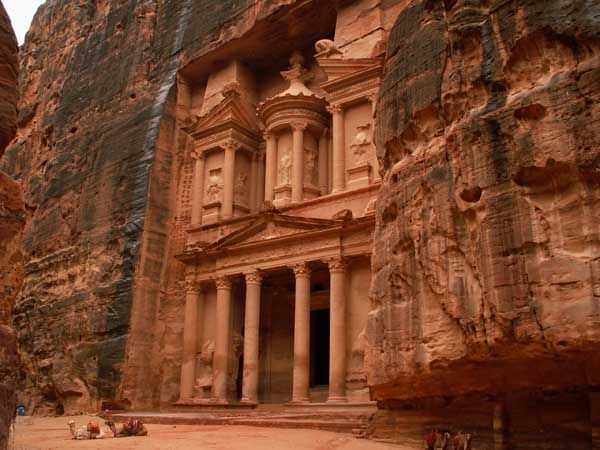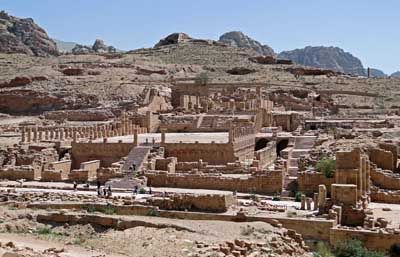Holiday Resolution
Inhabited since prehistoric times, the Nabataean caravan city of Petra, situated between the Red Sea and the Dead Sea,
was an important crossroads between Arabia, Egypt and Syria-Phoenicia and bears a unique testimony of a disappeared civilization in which ancient Eastern traditions blended with Hellenistic architecture.
Petra lies south of modern Amman on the edge of the mountainous desert of Wadi Araba, surrounded by towering hills of sandstone which gave the city some natural protection against invaders. It was for centuries the meeting point of the main routes used by camel caravans transporting spices between the Mediterranean and the Near East, Africa and India. Petra was first established around the 6th century BC by the Nabataean Arabs, a Semitic people who laid the foundations of a commercial empire that extended into Syria. In AD 106 Trajan annexed the Nabataean Kingdom as part of the province of Arabia. The many earthquakes that hit Petra triggered a slow decline for the city, which was not halted by its designation as an Archiepiscopal See. The Arabs conquered the city in 636 but it remained distant from the pilgrim road to Mecca. The Crusaders constructed a fort there in the 12th century and Petra returned to its ancient splendour, but soon they withdrew, leaving Petra to the local people until the early 19th century, when it was visited by the Swiss explorer Burckhardt.
North from the Khazneh lies the massif of Jebel Khubtha. Three large structures (Royal Tombs) are carved into the rock face, which is known as the King's Wall.




No comments:
Post a Comment